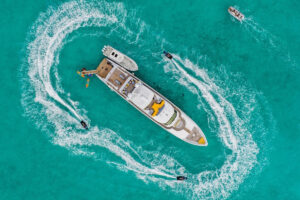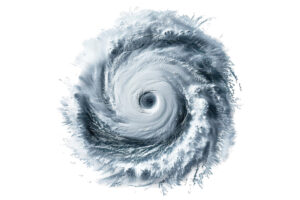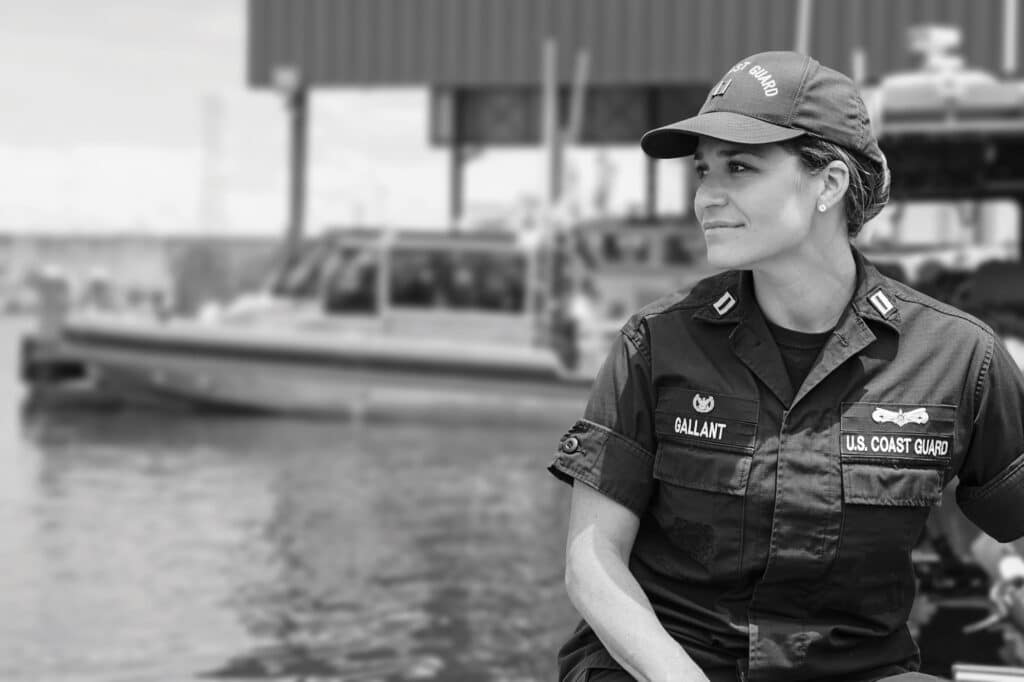
Following a call from a concerned family member, Lt. Jess Gallant and her team set off for a frozen lake and a family of four stranded on their 30-foot sailboat—batteries dead, limbs numb, stomach grumbling. The then-Seaman was just weeks out of U.S. Coast Guard boot camp on her first-ever search-and-rescue mission. She helped escort the family onto a 45-foot response boat and into the survivor’s compartment. Later, while watching the family warm themselves over hot cocoa and soup, she knew this was her calling. Today, at 32, Gallant is the commanding officer of the Coast Guard Station in New Orleans, the second-largest USCG station. “When I graduated from college, I thought I wanted a much different career path than the one I am currently on—something corporate and predictable. I’m glad things panned out the way they did. Every day is a new case, a new adventure, a new challenge.”
Who or what was your inspiration for joining the Coast Guard?
Gallant: I had family that served in the Coast Guard, so I heard about the service often growing up. Also, I lived just down the river from Training Center Yorktown, Virginia, and saw boats full of future Boatswain’s Mates conducting small-boat training on the York River all the time.
What drew you to the Coast Guard over the other branches?
Gallant: Initially, I was drawn to the search-and-rescue (SAR) mission. The idea of saving people from peril was exciting to me. After nearly 10 years in, I am still excited about SAR. I’ve been involved in some of the other 11 missions that the Coast Guard has, including Law Enforcement, Drug and Migrant Interdiction, Living Marine Resources, and Ports, Waterways and Coastal Security. But SAR is still my favorite.
Do you have any family or friends who are in the Coast Guard now or who have previously served?
Gallant: I have an uncle that retired after serving over 30 incredible years in the Coast Guard. I also have an aunt who served and attended the first all-female boot-camp class in 1979; her class was Alpha 109. The Coast Guard is a small service, so I’ve had the privilege of creating some very meaningful relationships with the people I work with. Many of them are like family to me. They work all over: Mexico City, the White House, Alaska, Florida. The Coast Guard is unique in that, wherever you may get stationed, someone there is bound to have a friend in common with you.
What do you aspire to achieve in the Coast Guard?
Gallant: For the last eight years, I have been working toward earning the position I currently serve in. I started as an enlisted Boatswain’s Mate and then attended Officer Candidate School (OCS). I hope to one day become a sector commander. But, ultimately, if I can make positive changes for the men and women of the Coast Guard, and continue to help the American people by conducting search and rescue, protecting maritime commerce and preserving our living marine resources, then I think I will look back at my career and call it one of my greatest achievements—my barfy toddler being the other.
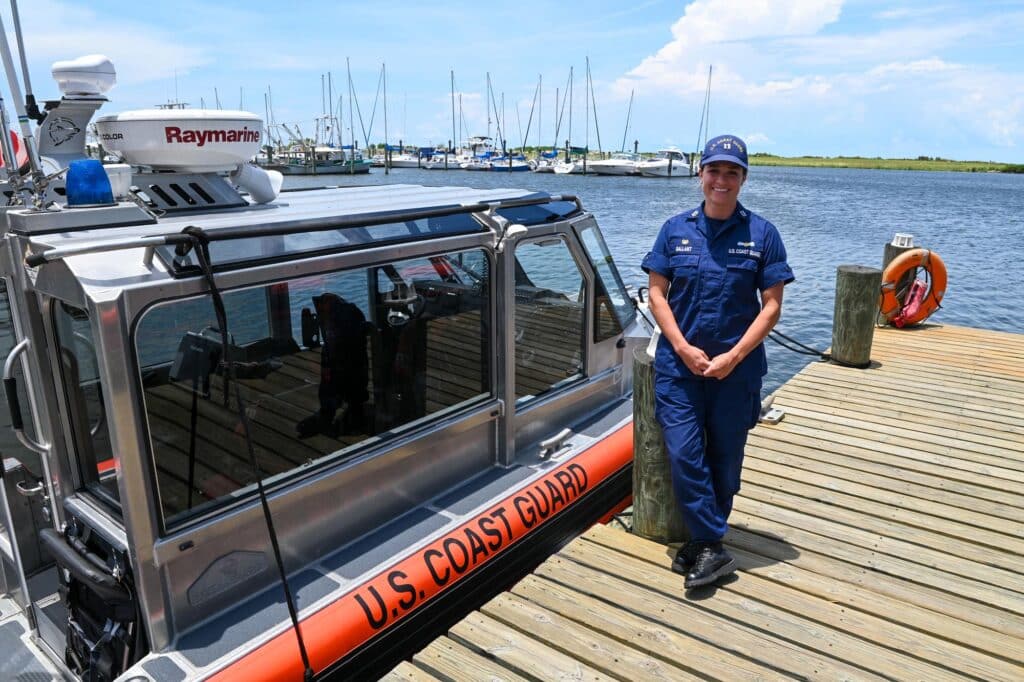
What is your timeline to complete those goals?
Gallant: I have two years left in my current role, and then I will transfer somewhere new. I am planning to apply for graduate school. The Coast Guard offers some incredible advanced-education opportunities for its servicemembers, and they’ve already helped me earn one master’s degree through tuition assistance. I’ve still got a ways to go, but I intend to have a long career in the Coast Guard.
Can you please recount your most interesting story with the Coast Guard?
Gallant: I think this would require us to sit down and have a beer—or coffee—or two. I could share “sea stories” with you all day. I can highlight a couple of cases that most impacted me.
My first SAR case was when I was stationed in Annapolis, Maryland. A family of four lived on board a 30-foot sailboat. The bay that they were moored up in froze over, and they were stuck. When the batteries died, they were stuck and cold. I was only a few weeks out of boot camp and was amped to go out and get them. They were in rough shape and had two little kids who were hungry and shivering. We took them back to the station to warm up, and the cook made them some soup and hot cocoa, while they were waiting for some family members to come pick them up. I remember feeling very proud and amazed that the crewmembers, who were more senior to me, were so nonchalant about it. “We do this all the time.” I called my dad that night and jabbered on about how heroic I thought we were. I’m laughing [as I recall this] because, 10 years later, it was such a simple case. But it made an impression.
Fast forward a couple of years, and I was the coxswain in charge of a 45-foot jet-drive response boat (RB-M) interdicting a styrofoam “boat” with a tarp for a sail with 11 migrants on board off the coast of Fort Lauderdale, Florida. One of them attempted to eviscerate himself; one of them attempted to attack my crew with a machete—a much more dynamic, complicated case. We successfully got them off the water after having spent the last 20-plus days at sea with limited food and water. They were in much rougher shape.
One time, when I was stationed in Fort Lauderdale, we responded to a 24-foot vessel taking on water, just outside of Port Everglades inlet. The weather had gotten nasty quickly, and they took some water over the bow. There were only three people on board; one of them was a baby, maybe 8 or 9 months old. The father literally tossed his baby into the arms of one of my crewmembers on board our 33-foot response boat. I remember thinking, “Damn.” We were able to preserve the boat and everyone on board—happy ending. But that flying baby wearing a life jacket lives in my mind at all times.
My husband deployed for Hurricane Harvey in late summer of 2017. He is a Coast Guard rescue swimmer, and we met through some mutual friends when we were both living in the Miami area. He was working out of Air Station Houston, flying all day and pulling people off of roofs amid catastrophic flooding. At the time, I was a newly commissioned officer working in the Sector Miami Command Center, coordinating SAR and law-enforcement response. Our wedding was scheduled for the following Saturday in the Outer Banks, North Carolina. We had the typical military courthouse wedding a year prior, but not everyone knew that. I was hoping that he would be home in time to drive up with me for the ceremony but couldn’t know for sure. And, either way, I was willing to enjoy the party with or without him; that’s life in the Coast Guard.
I was in a makeup store trying to find the right shade of coverup to hide my tattoo from my grandma for the wedding ceremony when I happened to look up at the TV. There, live on CNN, was my husband, Evan, conducting a live hoist of two people and two Boston Terriers with Anderson Cooper on board his helicopter. I told the lady testing the makeup on me, “Hey, that’s my husband!” She looked at me like I was bananas and didn’t talk to me for the rest of the session. Looking back, maybe she thought I was talking about Anderson Cooper—or the Boston Terriers? He made it back in time for the wedding, fortunately, but most of our wedding party and many of our guests were missing because they were either pulling survivors off of rooftops or helping coordinate the response to the flooding. Anyone else might be upset by that, but Evan and I were proud.
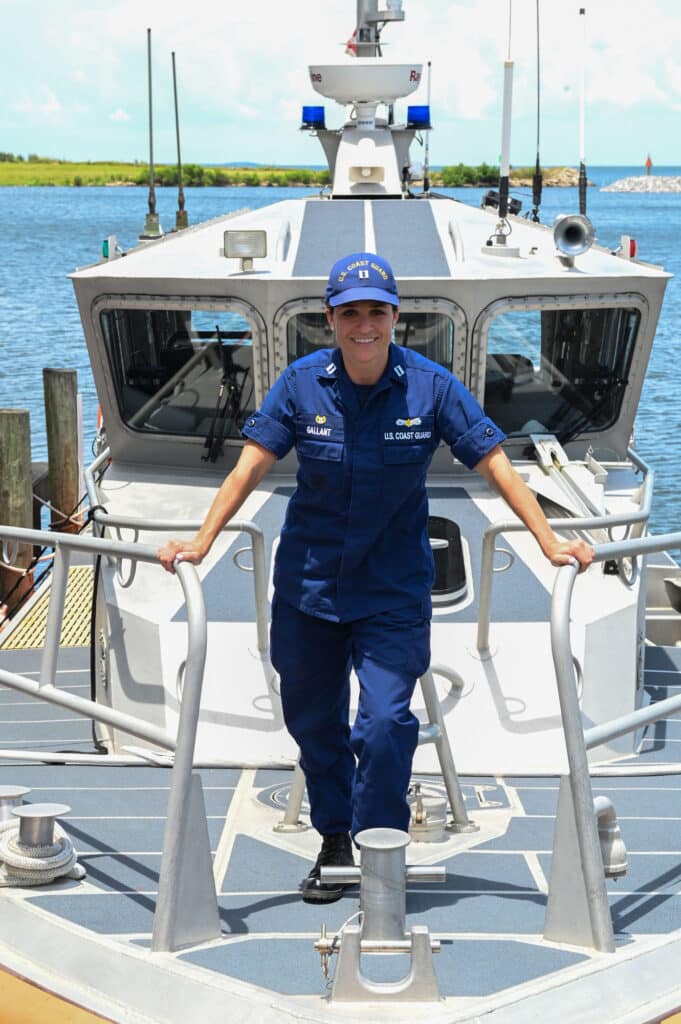
What is your full title, and can you please provide a list of your responsibilities?
Gallant: I am currently the commanding officer of Coast Guard Station New Orleans, the second-largest station in the Coast Guard. We have eight response assets (small boats) that range from 24 feet to 45 feet. I am responsible for SAR, Law Enforcement, and Ports, Waterways and Coastal Security. Our area of responsibility includes the Mississippi River from Baton Rouge to Port a la Hache, and the lakes and bayous from the Pearl River to Vermillion Bay.
If you weren’t in the Coast Guard, what would you be doing?
Gallant: I ask myself this question often. I really don’t know. I would like to think that I would be doing something to help people. When I graduated from college, I thought I wanted a much different career path than the one I am currently on—something corporate and predictable. I’m glad things panned out the way they did. Every day is a new case, a new adventure, a new challenge. I can’t imagine myself doing anything else.

